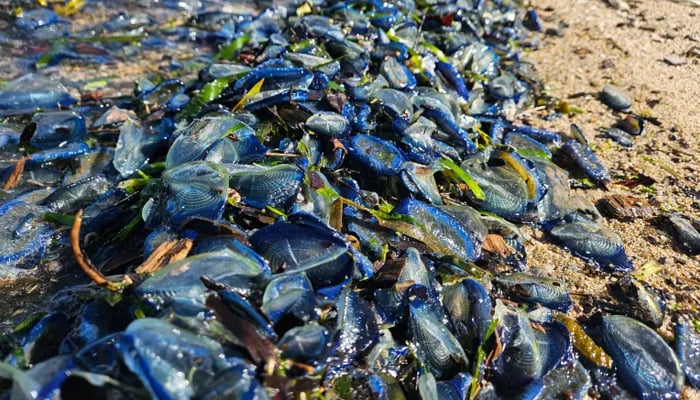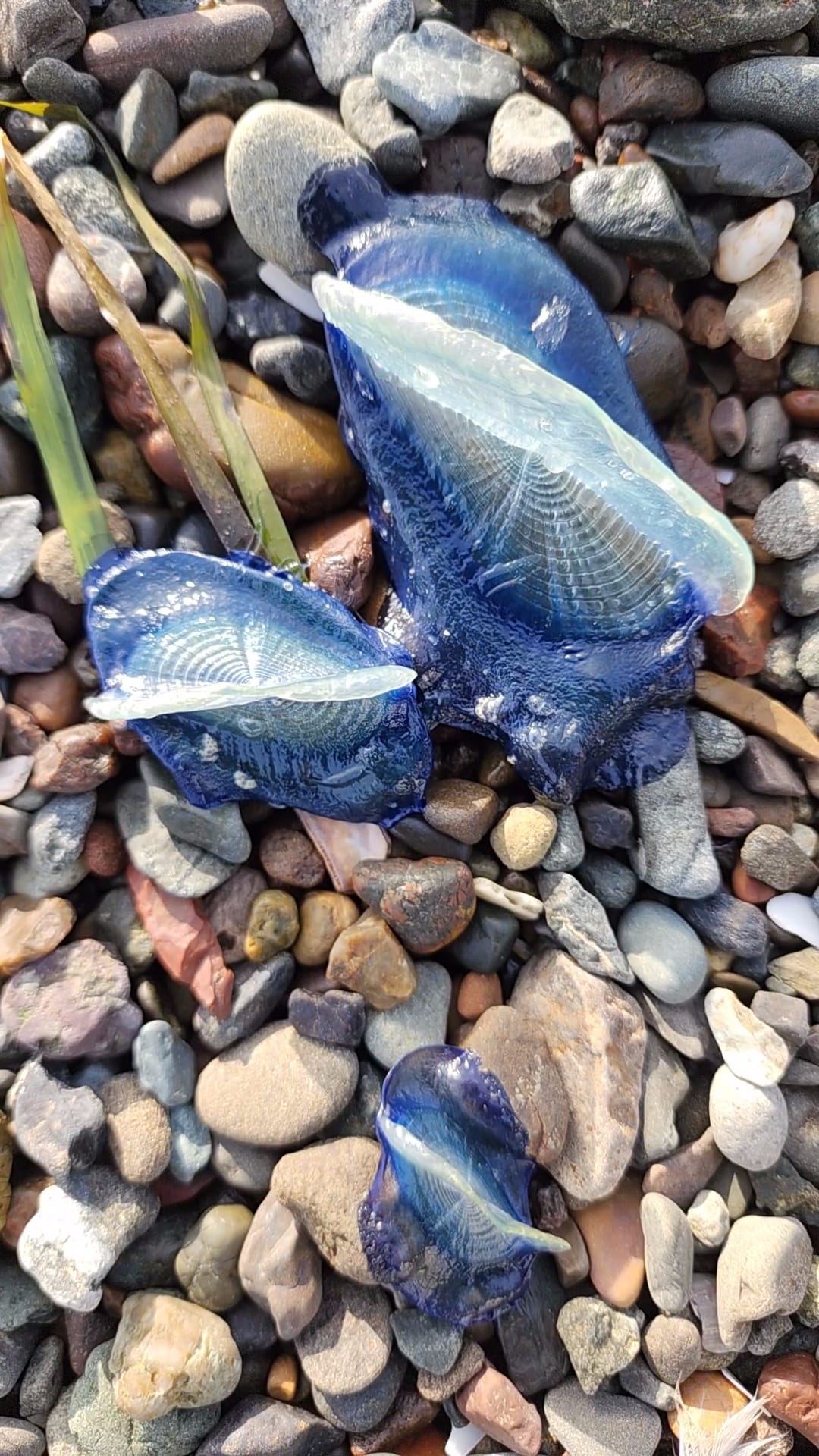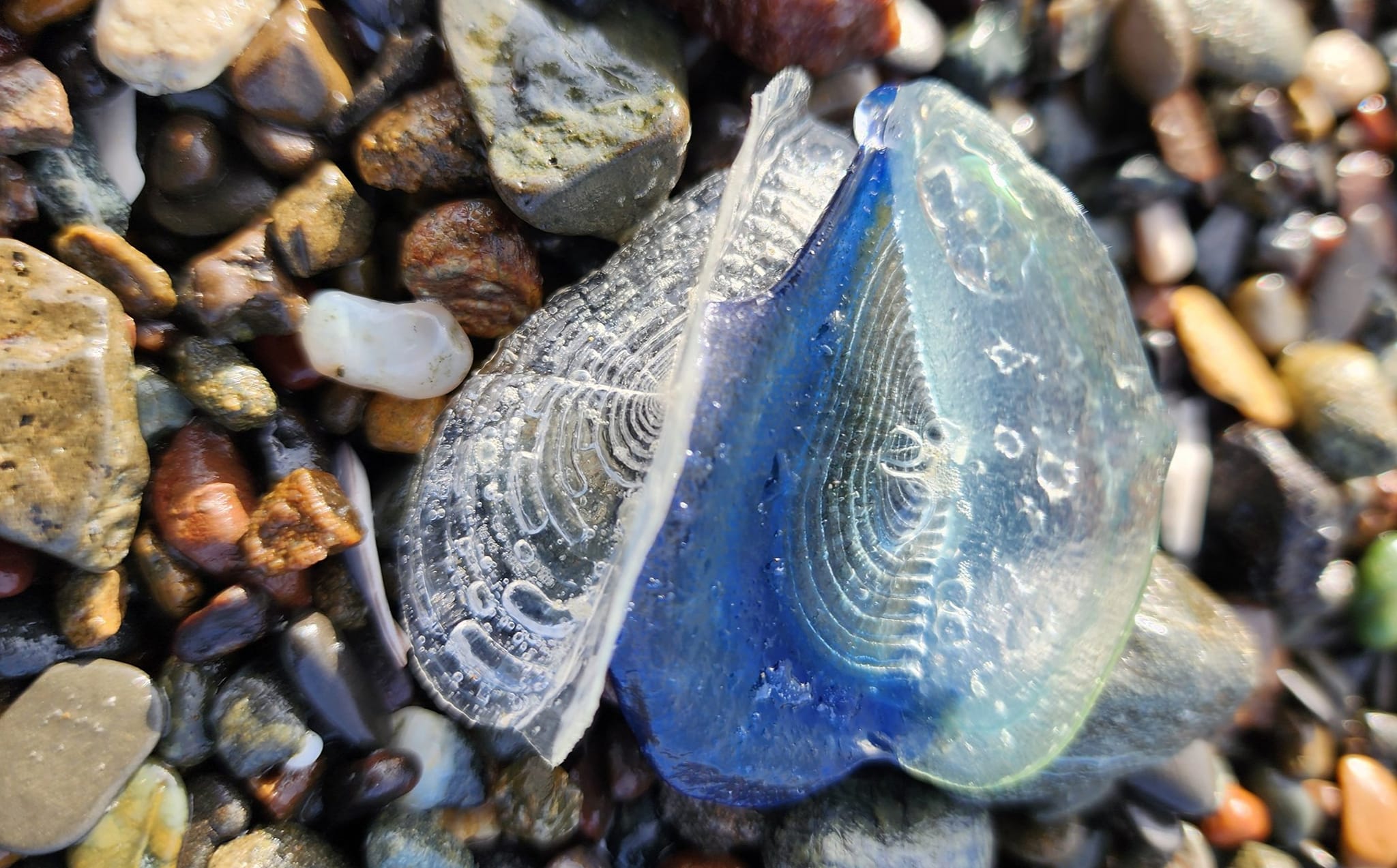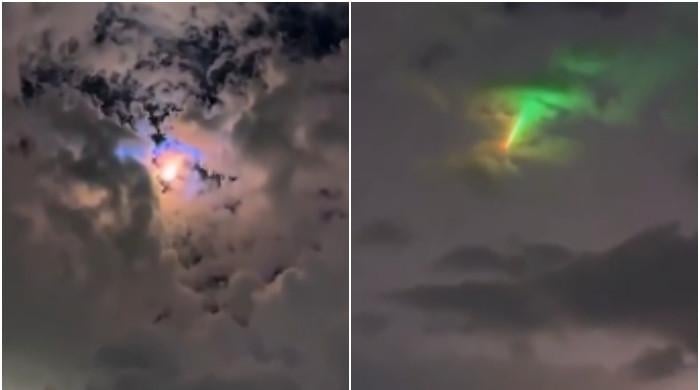Amazing: Blue creatures come ashore in California
People also post several pictures on social media
April 02, 2024

Hundreds of thousands of tiny jellyfish-like creatures are washing up on the beaches of San Francisco as experts explain why this occurrence is rare because of such large numbers.
Several people on social media also posted pictures from different beaches of the tiny blue organisms.
"You could look at it as a work of art, part of nature," said Natasha Kimmel in an ABC 7 report.

Kimmel said: "I've never seen so many here on this beach."
The creature with a strange appearance is close to jellyfish however, it is long by an inch or two and is called Velella velella.
The tiny blue blobs are also known as By-The-Wind-Sailors.
"Their name gives away their mode of transportation for sure, they have little sails that stick up the currents of the ocean and take them along their journey," noted Melissa Schouest from Aquarium of the Bay in San Francisco.

Schouest regarded the event as not rare but cool to witness.
"I thought at first, wow there's a lot of these things out here, more than I've ever seen," a visitor who came from Davis said adding that "I guess my concern is, is this normal."
According to experts, climate change and wet winters may cause their large number to show up on beaches.
She recommended not touching the colonies and also keep the pets away from the organisms.











